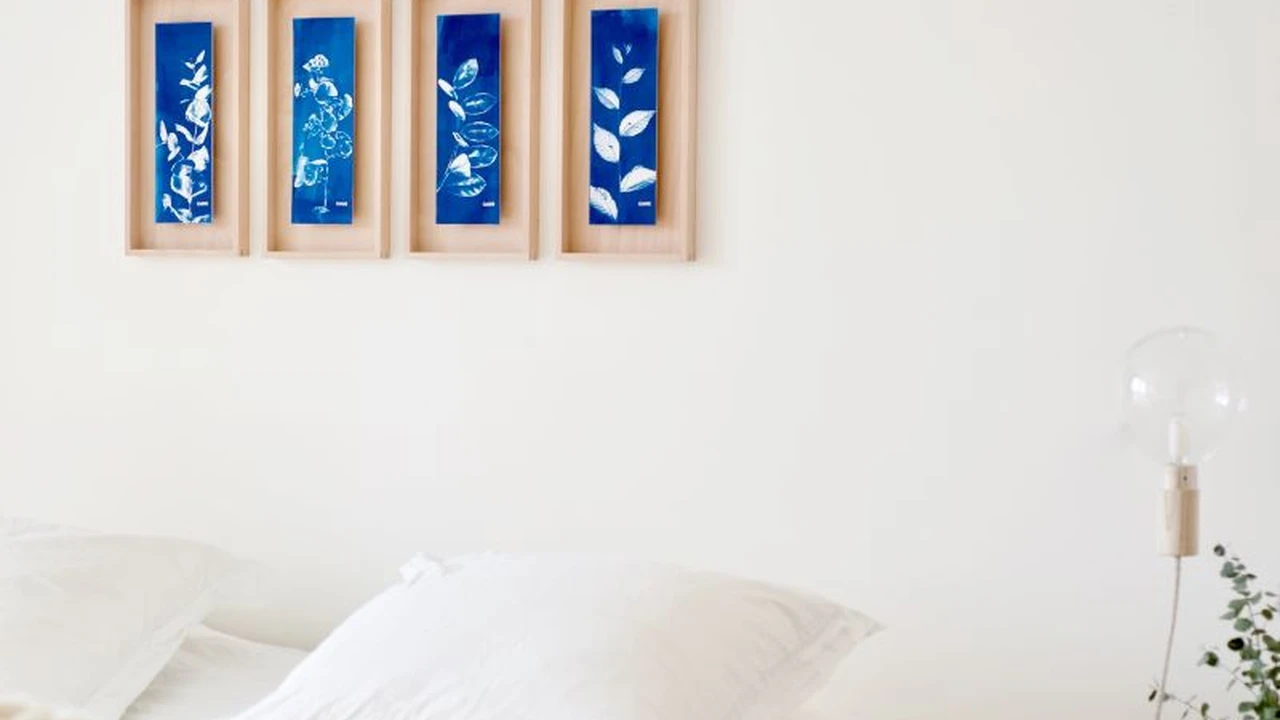Bedroom Decor for Calming Sleep
Integrate smart home technology to optimize your sleep environment. Automate lighting, temperature, and sound for better rest.

Smart Home Devices for Sleep Optimization
Hey there, fellow sleep seekers! Ever feel like your bedroom is working against your quest for a good night's rest? What if I told you that the very technology we often blame for keeping us awake could actually be your best ally in achieving dreamland? That's right, we're diving deep into the world of smart home devices and how they can revolutionize your sleep. Forget counting sheep; let's talk about smart lights, intelligent thermostats, and sound machines that practically tuck you in.
Why Smart Home Integration for Sleep Matters
You might be thinking, 'Do I really need another gadget?' But hear me out. Our sleep environment plays a massive role in how well we sleep. Think about it: light exposure, room temperature, and ambient noise all directly impact our circadian rhythm and sleep quality. Manually adjusting these things every night can be a hassle, and let's be honest, we often forget. Smart home devices, however, can automate these processes, creating a consistent, optimized sleep sanctuary without you lifting a finger. This consistency is key for training your body for better sleep.
The Science Behind Environmental Sleep Optimization
It's not just about comfort; there's solid science here. Our bodies are incredibly sensitive to light. Blue light, emitted from screens and even some LED bulbs, suppresses melatonin production, the hormone that tells your body it's time to sleep. Smart lighting can shift to warmer tones as evening approaches, mimicking natural sunset and signaling your body to wind down. Temperature is another big one. Your body temperature naturally drops as you prepare for sleep. A smart thermostat can pre-cool your room to the ideal sleep temperature (typically between 60-67°F or 15-19°C), making it easier to drift off and stay asleep. And noise? Consistent, soothing sounds can mask disruptive noises, helping you maintain deep sleep cycles.
Smart Lighting Solutions for Sleep Enhancement
Let's start with light, because it's arguably the most impactful environmental factor. Smart bulbs and light strips offer incredible control over color temperature and brightness, allowing you to create a dynamic lighting environment that supports your sleep-wake cycle.
Philips Hue Smart Lighting System
What it is: Philips Hue is probably the most well-known smart lighting system. It offers a vast range of bulbs, light strips, and lamps that connect to a central 'Bridge' or directly via Bluetooth. You control them through an app, voice assistants, or smart switches.
How it helps sleep: Hue's 'Wake up' and 'Go to sleep' routines are fantastic. The 'Go to sleep' routine gradually dims lights and shifts to warm, amber tones over a set period, gently preparing your body for rest. The 'Wake up' routine does the opposite, slowly brightening with cool, energizing light to simulate a sunrise, making waking up feel more natural and less jarring. You can also set specific scenes for reading in bed with warm, low light, or completely turn off all lights with a single command.
Use Case: Imagine this: At 9 PM, your bedroom lights automatically dim to 30% brightness and shift to a warm orange glow. By 10 PM, they're at 5% and a deep red, signaling your brain it's time to power down. Then, at 6 AM, a gentle, simulated sunrise slowly brightens your room, making your alarm feel less like a shock and more like a gentle nudge.
Price Range: Starter kits (Bridge + 2-3 bulbs) typically range from $70-$150 USD. Individual bulbs are $15-$50 USD depending on features.
LIFX Smart Bulbs and Light Strips
What it is: LIFX offers high-quality, bright smart bulbs and light strips that connect directly to your Wi-Fi, meaning no separate hub is required. They are known for their vibrant colors and excellent white light range.
How it helps sleep: Similar to Hue, LIFX allows for scheduling and color temperature adjustments. Their 'Day & Dusk' feature automatically adjusts the light's color and brightness throughout the day to match natural light patterns, which is excellent for maintaining a healthy circadian rhythm. You can also create custom 'sleep' scenes with very low, warm light.
Use Case: You can set your LIFX bulbs to gradually dim and warm up starting an hour before your bedtime, creating a consistent wind-down signal. Their direct Wi-Fi connection makes setup a breeze if you prefer fewer hubs.
Price Range: Individual bulbs are generally $25-$60 USD. Light strips vary from $30-$90 USD.
Comparison: Philips Hue vs. LIFX for Sleep
Both are excellent choices. Philips Hue offers a more extensive ecosystem with more accessories (switches, motion sensors) and a very robust, reliable hub-based system. LIFX is great for simplicity with no hub required and often boasts brighter colors. For dedicated sleep routines, both perform admirably, but Hue's integrated routines might feel a bit more polished for beginners. If you're already invested in a smart home ecosystem like Apple HomeKit, Google Home, or Amazon Alexa, check compatibility for both.
Smart Thermostats for Optimal Sleep Temperature
Temperature is a silent sleep killer if it's not right. Too hot, and you're tossing and turning. Too cold, and you're shivering. Smart thermostats take the guesswork out of maintaining the perfect sleep climate.
Nest Learning Thermostat
What it is: The Nest Learning Thermostat is famous for its ability to learn your preferences and create schedules automatically. It also has sensors to detect when you're home or away.
How it helps sleep: Nest allows you to set specific temperature schedules for different times of the day. You can program it to drop to your ideal sleep temperature (e.g., 65°F) an hour before bed and then slightly raise it just before your alarm goes off, making it easier to get out of bed. Its 'Home/Away Assist' can also save energy by adjusting temperature when you're not around, but for sleep, the precise scheduling is key.
Use Case: Your Nest thermostat automatically lowers the temperature to a cool 65°F at 10 PM, ensuring your room is perfectly chilled for sleep. It then subtly raises it to 68°F at 6:30 AM, making your morning transition smoother.
Price Range: Around $200-$250 USD.
ecobee SmartThermostat with Voice Control
What it is: The ecobee SmartThermostat is known for its remote sensors, which can be placed in different rooms to get a more accurate temperature reading across your home. It also has built-in Alexa voice control.
How it helps sleep: The remote sensors are a game-changer for sleep. Instead of just reading the temperature in your hallway, you can place a sensor in your bedroom, ensuring the thermostat is optimizing the temperature specifically for where you sleep. You can set 'Sleep' comfort settings that prioritize the bedroom sensor. Its scheduling features are robust, allowing for precise temperature control throughout the night.
Use Case: You place an ecobee sensor in your bedroom. The thermostat then ensures your bedroom hits that perfect 62°F, even if the rest of the house is warmer. This targeted temperature control is fantastic for consistent sleep.
Price Range: Around $200-$250 USD.
Comparison: Nest vs. ecobee for Sleep
Both are top-tier smart thermostats. Nest is great for those who want a 'set it and forget it' learning experience. Ecobee, with its remote sensors, offers more precise temperature control, especially if your bedroom tends to be a different temperature than the rest of your house. For sleep optimization, ecobee's ability to prioritize bedroom temperature via remote sensors gives it a slight edge.
Smart Sound Machines and Sleep Aids
Noise can be a huge disruptor. Whether it's street traffic, noisy neighbors, or even a snoring partner, consistent background sound can help mask these disturbances and create a more peaceful sleep environment.
Hatch Restore 2 Smart Sleep Assistant
What it is: The Hatch Restore 2 is more than just a sound machine; it's an all-in-one sleep assistant. It combines a sound machine, sunrise alarm, and reading light into one sleek device, controlled via an app.
How it helps sleep: It offers a vast library of soothing sounds (white noise, nature sounds, meditations, stories) that can be programmed to play throughout the night or for a set duration. Its sunrise alarm feature is incredibly gentle, and the reading light can be set to warm, non-melatonin-suppressing tones. You can create multi-step routines, like 'reading light on for 30 mins, then meditation for 15 mins, then white noise all night, then sunrise alarm.'
Use Case: You set a routine: at 9:30 PM, the Hatch Restore 2 turns on a soft, warm reading light. At 10 PM, it transitions to a guided meditation for 10 minutes, followed by gentle rain sounds that play until morning. At 6:45 AM, a gradual sunrise light begins, followed by a gentle birdsong alarm.
Price Range: Around $130-$200 USD.
LectroFan Micro2 Sleep Sound Machine
What it is: A compact, portable white noise machine that offers a variety of fan sounds and white noise options. It's simple, effective, and great for travel.
How it helps sleep: While not 'smart' in the app-controlled sense, its effectiveness in masking noise is undeniable. It provides consistent, non-looping white noise or fan sounds that can drown out disturbances. Its portability means you can take your optimized sound environment with you.
Use Case: You're staying in a noisy hotel room. You pull out your LectroFan Micro2, turn on the 'deep white noise' setting, and instantly create a consistent sound barrier that helps you fall asleep and stay asleep despite the street noise outside.
Price Range: Around $30-$40 USD.
Comparison: Hatch Restore 2 vs. LectroFan Micro2 for Sleep
These are very different devices. The Hatch Restore 2 is a comprehensive, app-controlled smart sleep assistant, ideal for creating elaborate, personalized sleep routines. The LectroFan Micro2 is a straightforward, highly effective white noise machine, perfect for those who just need consistent sound masking and portability. If you want an integrated, smart experience, go with Hatch. If you just need reliable white noise, LectroFan is a solid, budget-friendly choice.
Smart Blinds and Curtains for Light Control
Even with smart lights, natural light can be a problem. Smart blinds or curtain openers can automate the process of blocking out morning light or letting it in at the right time.
IKEA FYRTUR Smart Blinds
What it is: IKEA's smart blackout roller blinds are battery-operated and can be controlled via a remote, the IKEA Home smart app, or integrated with smart home ecosystems like Apple HomeKit, Google Home, and Amazon Alexa.
How it helps sleep: These blinds offer complete blackout, which is crucial for deep sleep, especially if you live in an area with streetlights or early sun. You can schedule them to close at bedtime and open at your desired wake-up time, or even integrate them with your smart lights for a combined sunrise simulation.
Use Case: Your IKEA smart blinds automatically close at 9:45 PM, plunging your room into complete darkness. In the morning, they slowly open at 7 AM, allowing natural light to gently wake you up, perfectly synchronized with your smart lights.
Price Range: Varies by size, typically $120-$180 USD per blind.
SwitchBot Curtain Smart Electric Motor
What it is: SwitchBot Curtain is a small robot that attaches to your existing curtain rod or rail and automates opening and closing your curtains. It's a retrofit solution, meaning you don't need to buy new curtains.
How it helps sleep: This is a fantastic option if you love your current curtains. You can schedule them to open and close, or control them via the app or voice commands. It's great for blocking out light at night and letting in natural light in the morning, contributing to a healthy circadian rhythm.
Use Case: You've got beautiful, heavy blackout curtains. At 10 PM, your SwitchBot Curtain silently closes them. At 6:30 AM, it gently pulls them open, letting the morning sun stream in, providing a natural wake-up call.
Price Range: Around $100-$150 USD per device (you might need two for a wide window).
Comparison: IKEA FYRTUR vs. SwitchBot Curtain for Sleep
IKEA FYRTUR is an integrated blackout blind solution, great if you're starting fresh or need new blinds anyway. SwitchBot Curtain is a brilliant retrofit option, allowing you to automate your existing curtains. Both achieve the goal of automated light control, but your existing setup will dictate which is more suitable.
Integrating Your Smart Sleep Ecosystem
The real magic happens when these devices talk to each other. This is where smart home platforms come in.
Apple HomeKit, Google Home, and Amazon Alexa
What they are: These are the major smart home ecosystems that allow different smart devices from various brands to work together. You can create 'routines' or 'automations' that trigger multiple actions based on time, presence, or other conditions.
How they help sleep: You can create a 'Good Night' routine that, with a single voice command or tap, does the following: dims your Philips Hue lights to a warm glow, sets your Nest thermostat to 65°F, and starts your Hatch Restore 2 playing white noise. In the morning, a 'Good Morning' routine can slowly brighten your lights, raise the temperature, and open your smart blinds.
Use Case: You say, 'Alexa, good night.' Immediately, your bedroom lights dim and change color, the thermostat adjusts, and your sound machine starts. No more fumbling with multiple apps or switches. It's seamless sleep preparation.
Price Range: The platforms themselves are free, but you'll need compatible smart speakers (e.g., Amazon Echo Dot, Google Nest Mini, Apple HomePod Mini) ranging from $30-$100 USD.
Tips for Setting Up Your Smart Sleep Sanctuary
Ready to dive in? Here are a few pointers to make your smart sleep setup a success:
- Start Small: You don't need to buy everything at once. Pick one area that's most disruptive to your sleep (e.g., light, temperature) and invest in a smart device for that.
- Check Compatibility: Before buying, ensure your chosen devices work with your preferred smart home ecosystem (Apple HomeKit, Google Home, Amazon Alexa).
- Consistency is Key: Once set up, stick to your automated routines. Your body thrives on consistency.
- Experiment with Settings: Everyone's ideal sleep environment is slightly different. Play around with light levels, color temperatures, and specific temperatures until you find what works best for you.
- Don't Overdo It: The goal is to simplify and optimize, not to add more complexity. Keep your routines focused on sleep.
Embracing smart home technology for sleep optimization isn't about being lazy; it's about being smart. It's about leveraging automation to create a consistent, ideal sleep environment that supports your body's natural rhythms. So go ahead, let technology do the heavy lifting, and enjoy the best sleep of your life!
:max_bytes(150000):strip_icc()/277019-baked-pork-chops-with-cream-of-mushroom-soup-DDMFS-beauty-4x3-BG-7505-5762b731cf30447d9cbbbbbf387beafa.jpg)






